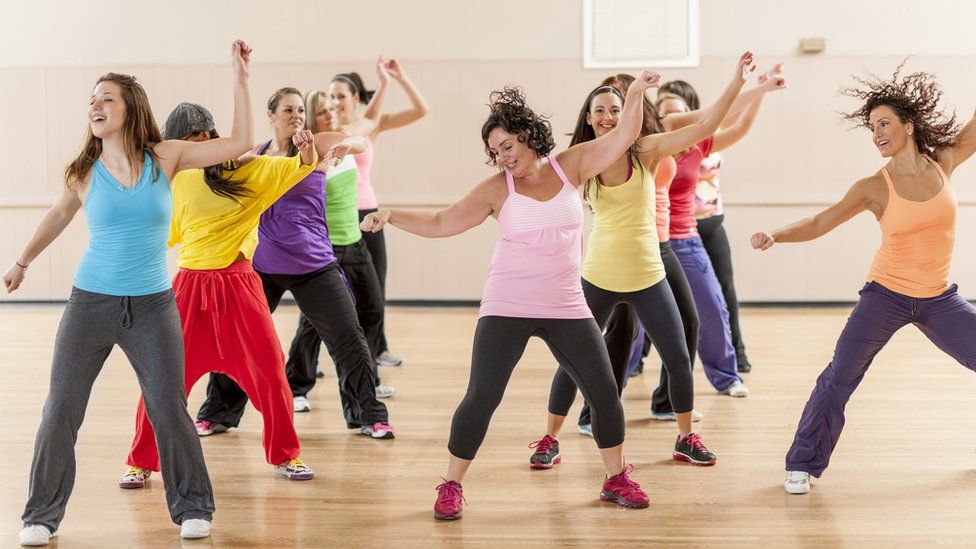
Energy-expenditure of Zumba (573.9 ± 100.3) was superior to aerobic exercise (260.4 ± 63.8).Įxercise intensity of Zumba was superior to low-intensity aerobic exercise, with HR and lactate responses corresponding to participants’ VT2. Both Zumba and aerobic exercise increased lactate responses at 25 min and post-exercise, when compared to rest. Lactate concentration (mmol.L⁻¹) of Zumba (10.9 ± 3.4) was superior to aerobic exercise (6.9 ± 3.6) at 25 min, also post-exercise. Zumba presented higher HR percentage of VT2 (95.3%) than walking (86%).

VT2 was determined from the HR deflection point obtained during a maximum effort test. Fingertip blood samples were taken pre, at 25 min, and post exercise sessions. Ten healthy women (28 ± 3.2 yrs, BMI 25.3 ± 2.7) were examined on three occasions, in a randomized cross-over study: preliminary tests (body composition/aerobic fitness), session 1 (Zumba), and session 2 (aerobic exercise, 65% HRreserve). Comparisons were performed with a low-to-moderate intensity aerobic exercise session (walking/running). To describe heart rate (HR), lactate and energy-expenditure during a Zumba class, relating them to participants’ second ventilatory threshold (VT2). However, the aerobic training intensity of Zumba for healthy adult women is unclear. Zumba is an alternative type of dance-exercise for improving fitness and cardiovascular risk in women. Significant pre- to post-class improvements in positive well-being (p < 0.01, partial η2 = 0.41) and psychological distress (p < 0.001, partial η2 = 0.72) were simultaneously observed for both salsa dance and Zumba fitness.Ĭonclusion: The acute responses to classes of partnered Latin dance and non-partnered Latin-themed aerobic dance suggest that in physically inactive women participation is indeed efficacious in terms of community-based physical activity and psychosocial health promotion. 4108 ± 781 step) during Zumba fitness when compared to salsa dance.

Results: There was a significantly higher (p < 0.001) total time spent in moderate-to-vigorous physical activity (51.2 ± 3.1 vs. Psychological experiences were measured via the Subjective Exercise Experiences Scale. Physiological data were collected using a wrist-worn ActiGraph wGT3X+ accelerometer with accompanying heart rate monitor and were processed using previously validated dance-specific techniques. The 1-h classes were taught by certified instructors in established venues in the Royal Borough of Kingston and the surrounding communities of London, UK. The participants then attended two partnered salsa dance and two non-partnered Zumba fitness classes each in a counterbalanced order over a 2-week period.

Methods: Twenty-four participants, aged 22-56 year, visited the laboratory to perform a graded exercise test for determination of maximal oxygen uptake and maximal heart rate. The purpose of this study was to simultaneously assess the physiological responses and psychological experiences during salsa dance and Zumba fitness in a community sample of physically inactive women. Background: Research interest in both partnered Latin dance and non-partnered Latin-themed aerobic dance has increased in recent years, likely a result of the gaining popularity of these types of instructor-led group classes among the mainstream dance and fitness audiences however, the efficacy of these activities for the purposes of health promotion currently remains unclear.


 0 kommentar(er)
0 kommentar(er)
